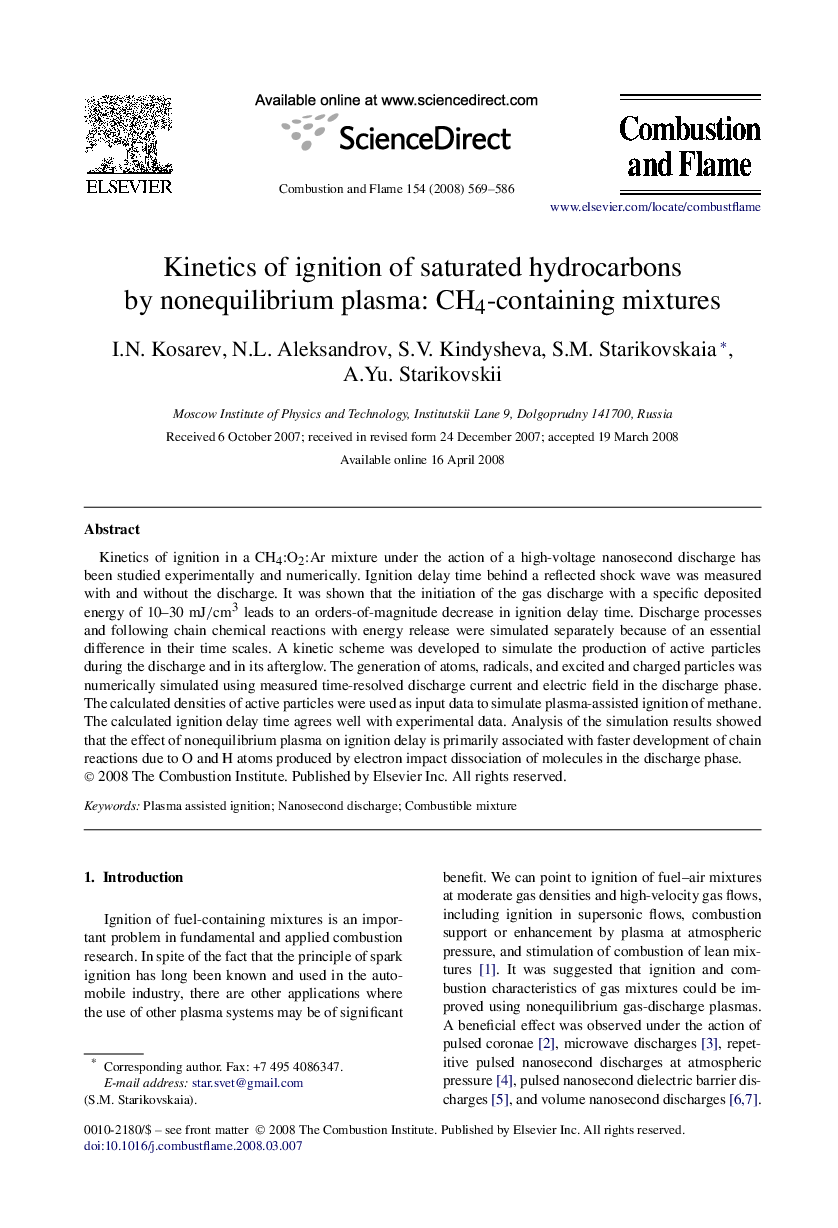| Article ID | Journal | Published Year | Pages | File Type |
|---|---|---|---|---|
| 167837 | Combustion and Flame | 2008 | 18 Pages |
Kinetics of ignition in a CH4:O2:Ar mixture under the action of a high-voltage nanosecond discharge has been studied experimentally and numerically. Ignition delay time behind a reflected shock wave was measured with and without the discharge. It was shown that the initiation of the gas discharge with a specific deposited energy of 10–30 mJ/cm3 leads to an orders-of-magnitude decrease in ignition delay time. Discharge processes and following chain chemical reactions with energy release were simulated separately because of an essential difference in their time scales. A kinetic scheme was developed to simulate the production of active particles during the discharge and in its afterglow. The generation of atoms, radicals, and excited and charged particles was numerically simulated using measured time-resolved discharge current and electric field in the discharge phase. The calculated densities of active particles were used as input data to simulate plasma-assisted ignition of methane. The calculated ignition delay time agrees well with experimental data. Analysis of the simulation results showed that the effect of nonequilibrium plasma on ignition delay is primarily associated with faster development of chain reactions due to O and H atoms produced by electron impact dissociation of molecules in the discharge phase.
